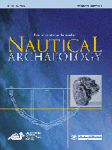
INTERNATIONAL JOURNAL OF NAUTICAL ARCHAEOLOGY
Scope & Guideline
Connecting Disciplines: From Shipwrecks to Scholarship
Introduction
Aims and Scopes
- Maritime Archaeology:
The journal focuses on the archaeological study of shipwrecks, harbors, and other submerged cultural resources, examining their historical context and technological aspects. - Naval History:
IJNA publishes works that analyze the historical development of naval architecture and shipbuilding practices across different cultures and time periods. - Cultural Heritage and Conservation:
The journal emphasizes the preservation and management of maritime heritage, addressing challenges and methodologies for protecting underwater archaeological sites. - Interdisciplinary Approaches:
Research published in IJNA often integrates methods from various disciplines, including history, anthropology, ecology, and technology, to provide holistic insights into maritime cultures. - Digital Tools in Archaeology:
The use of modern technologies such as remote sensing, GIS, and digital documentation techniques is a key area of focus, showcasing advancements in maritime archaeological research.
Trending and Emerging
- Community Engagement in Maritime Archaeology:
There is a growing emphasis on community-driven projects and participatory approaches in maritime archaeology, recognizing the importance of local knowledge and stakeholder involvement in heritage management. - Digital Archaeology and Data Analysis:
The integration of digital tools and technologies, such as 3D modeling, remote sensing, and big data analysis, is increasingly prominent, enabling more sophisticated investigations of underwater sites. - Environmental Impacts on Maritime Heritage:
Research focusing on the effects of climate change and environmental degradation on submerged sites is on the rise, highlighting the urgent need for conservation strategies. - Interdisciplinary Research in Maritime Studies:
There is an increasing trend towards interdisciplinary approaches that combine archaeology with fields such as environmental science, sociology, and economics to provide a more comprehensive understanding of maritime cultures. - Piracy and Maritime Conflict:
Emerging studies are delving into the archaeology and history of piracy and maritime conflict, reflecting contemporary interests in these often-romanticized topics.
Declining or Waning
- Traditional Shipbuilding Techniques:
While still relevant, there has been a noticeable decline in papers focusing solely on traditional shipbuilding methods, as contemporary studies often integrate these topics into broader discussions of maritime culture. - Local Maritime Economies:
Research specifically detailing local economic practices related to maritime activities has decreased, possibly overshadowed by more global or interdisciplinary studies. - Historical Accounts of Naval Battles:
There appears to be a waning interest in detailed historical accounts of specific naval battles, as the focus shifts toward broader themes such as maritime trade and cultural exchanges.
Similar Journals
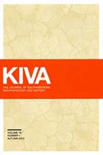
Kiva-Journal of Southwestern Anthropology and History
Connecting Cultures through Rigorous ScholarshipKiva - Journal of Southwestern Anthropology and History is a distinguished academic journal published by Routledge Journals, Taylor & Francis Ltd, that serves as a vital resource for scholars in the fields of anthropology, archaeology, and history. With an ISSN of 0023-1940 and an E-ISSN of 2051-6177, this journal has established itself as a significant avenue for scholarly communication since its inception in 1964. It consistently ranks in the top quartiles, including Q1 in Archaeology and Q2 in Anthropology, reflecting its high impact and rigorous peer-review process. Covering a wide array of topics pertinent to the Southwestern United States, Kiva invites original research articles, reviews, and methodological papers that advance understanding of the region's rich cultural heritage and historical narratives. While currently not open access, its commitment to disseminating quality research makes it an essential reading for researchers, professionals, and students aiming to explore the multifaceted dimensions of southwestern studies.

Navigator-Subsidios para a Historia Maritima do Brasil
Diving into Brazil's Rich Maritime NarrativesNavigating maritime history in Brazil, the journal Navigador-Subsidios para a Historia Maritima do Brasil serves as a pivotal platform for scholars, researchers, and enthusiasts alike. Published by the Ministerio Marinha, Serv Documentacao Geral Marinha, this esteemed journal has been offering Open Access content since 2005, ensuring that valuable insights into Brazil's rich maritime heritage are accessible to a global audience. Featuring a wide range of scholarly articles, the journal addresses various aspects of maritime history, including naval exploration, trade routes, and the cultural impact of seafaring on Brazilian society. By continually contributing to academic discourse, Navigador plays an essential role in preserving and promoting Brazilian maritime heritage, appealing to professionals in history, maritime studies, and cultural research.

Virtual Archaeology Review
Unlocking the Past with Innovative Virtual Techniques.Virtual Archaeology Review, published by UNIV POLITECNICA VALENCIA, EDITORIAL UPV, is a distinguished open-access journal dedicated to the dynamic fields of archaeology and conservation. Based in Spain, this journal has made a significant impact in the academic community, reflected in its outstanding Q1 ranking in Archeology and Conservation for 2023, alongside impressive standings in related disciplines such as Computer Science Applications. With an active commitment to promoting the accessibility of knowledge since 2010, it provides a platform for researchers, professionals, and students to share innovative findings and methodologies in virtual archaeology, fostering collaboration across disciplines. The journal's impact factor and its strategic focus on advancing the practice of virtual methodologies in archaeology underscore its vital role in bridging technology and heritage studies. By embracing a multidisciplinary approach, Virtual Archaeology Review not only enhances academic discourse but also drives the development of effective conservation strategies, making it an essential resource for those dedicated to the preservation and appreciation of our cultural heritage.

Cahiers Mondes Anciens
Fostering Dialogue on Ancient CivilizationsCahiers Mondes Anciens is a distinguished Open Access journal dedicated to advancing the field of ancient studies, encompassing a wide array of disciplines such as archaeology, history, and cultural heritage. Published by CAHIERS MONDES ANCIENS, based in Paris, this journal has been providing seamless access to groundbreaking research since its inception in 2010, embodying a commitment to democratizing knowledge within the academic community. With an ISSN of 2107-0199, Cahiers Mondes Anciens offers a platform for researchers and scholars to share innovative findings, critical analyses, and interdisciplinary approaches that enrich our understanding of the ancient world. The journal is renowned for its rigorous peer-review process, ensuring the highest standards of scholarship. By fostering a vibrant community of academics, it plays a crucial role in the ongoing discourse surrounding ancient civilizations, making it an essential resource for professionals, students, and enthusiasts alike.
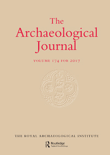
Archaeological Journal
Pioneering Archaeological Research for a Deeper UnderstandingArchaeological Journal, published by Taylor & Francis Ltd, stands as a leading voice in the field of archaeology, with a remarkable distinction in the Q1 category for both arts and humanities as well as conservation, underscoring its critical role in advancing scholarly dialogue and research. With an ISSN of 0066-5983 and E-ISSN of 2373-2288, this journal provides a platform for innovative research from 1977, now offering insights up to 2024. The United Kingdom-based journal is highly regarded, being within the top 81st percentile in archaeology and conservation according to Scopus rankings. Essential for researchers, professionals, and students, the journal's content spans rigorous archaeological studies, theoretical advancements, and discussions on conservation practices, ultimately aimed at fostering a deeper understanding of humanity's past. Notably, with no open access option, it maintains a traditional publishing approach, thereby ensuring curated and high-quality contributions to the academic community.

MARINERS MIRROR
Diving into the Rich Heritage of the OceansThe Mariners Mirror, published by Routledge Journals, Taylor & Francis Ltd, is an esteemed journal dedicated to exploring the rich intersections of maritime history and oceanographic research. Since its inception in 1911, this periodical has become a vital resource for scholars and professionals alike, offering a platform for high-quality peer-reviewed articles that delve into the historical significance of maritime activities, navigation, and the evolving relationship between humans and the sea. With an ISSN of 0025-3359 and an E-ISSN of 2049-680X, the journal operates under a rigorous academic framework, contributing to its current rankings in Scopus, particularly its Q3 position in History and Q4 in Oceanography as of 2023. Although it does not offer open access, it remains influential in both disciplines, fostering a deeper understanding of our maritime heritage and the environmental challenges faced by our oceans. The Mariners Mirror is essential for researchers, professionals, and students who seek to engage with the historical narratives that shape our contemporary maritime world.

Bulgarsko e-Spisanie za Arkheologiya-Bulgarian e-Journal of Archaeology
Exploring the depths of Bulgaria's archaeological wonders.Bulgarsko e-Spisanie za Arkheologiya - Bulgarian e-Journal of Archaeology is a prominent open-access journal published by the ASSOC BULGARIAN ARCHAEOLOGISTS since 2011, serving as a vital platform for the dissemination of archaeological research and findings in Bulgaria and beyond. With the ISSN 1314-5088, this journal is dedicated to advancing knowledge in the field of archaeology, facilitating the sharing of innovative studies, fieldwork results, and theoretical discussions. It is particularly significant for researchers, professionals, and students who are interested in the archaeological heritage of Bulgaria, providing an accessible venue for high-quality scholarly contributions. The journal's commitment to open access ensures that its rich repository of knowledge is available to a global audience, enhancing collaboration and fostering new discoveries within the discipline.
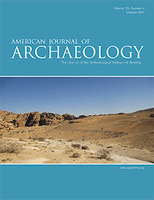
AMERICAN JOURNAL OF ARCHAEOLOGY
Unearthing the Past, Shaping the FutureThe American Journal of Archaeology (ISSN: 0002-9114, E-ISSN: 1939-828X), published by the esteemed University of Chicago Press, stands as a leading scholarly journal in the field of archaeology, celebrated for its rigorous peer-reviewed research. With an impressive impact factor that places it in the Q1 quartile for both archaeology and archaeology within the arts and humanities, this journal ranks among the top 15% in its field, according to Scopus metrics. It serves a global audience of researchers, professionals, and students, facilitating the dissemination of innovative findings from excavations, historical analyses, and methodological advancements. While primarily available through subscription, the journal's archives and features provide invaluable resources for deepening one's understanding of the past and engaging with current archaeological discourse. Operating from its home in Chicago, USA, the American Journal of Archaeology actively contributes to the advancement of knowledge and scholarship in archaeology, making it an essential platform for those invested in the exploration of ancient civilizations and cultural heritage.
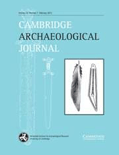
CAMBRIDGE ARCHAEOLOGICAL JOURNAL
Unearthing Insights, Shaping FuturesThe Cambridge Archaeological Journal, published by Cambridge University Press, is a premier academic journal dedicated to archaeology and cultural studies. With an ISSN of 0959-7743 and an E-ISSN of 1474-0540, it has established itself as a leading platform since its inception in 1991, showcasing groundbreaking research that significantly contributes to our understanding of human history and cultural heritage. The journal currently ranks in the top quartile (Q1) across various categories, including Archaeology and Cultural Studies, underlining its impact and relevance in the field. The impact factor reflects its esteemed position, with Scopus ranks placing it within the 90th to 93rd percentiles among its peers. Researchers, professionals, and students alike benefit from its insightful analyses and interdisciplinary approaches, making it an essential resource for advancing knowledge in archaeology and related fields. The journal is based in the United Kingdom, at the Edinburgh Building, Shaftesbury Rd, CB2 8RU, Cambridge, England, and continues to drive scholarly conversations through its commitment to excellence and innovation in archaeological studies.

Journal of Maritime Archaeology
Exploring the Depths of Maritime HeritageThe Journal of Maritime Archaeology, published by Springer, is a premier scholarly platform dedicated to advancing the understanding of maritime cultural heritage and underwater archaeology. With an ISSN of 1557-2285, this journal has continuously contributed to the field since its inception in 2006 and is set to celebrate its evolution until 2024. Holding a distinguished position as a Q1 journal in the field of Archaeology (Arts and Humanities) as of 2023, it ranks impressively at #96 out of 413 journals in its category, placing it in the 76th percentile of its field. This journal aims to disseminate high-quality research that explores the interplay between maritime environments and human activities, showcasing innovative methodologies, historical narratives, and cultural analyses. Researchers, professionals, and students engaged in maritime studies will find this journal an invaluable resource for advancing knowledge and fostering international collaboration in this vital area of archaeology.